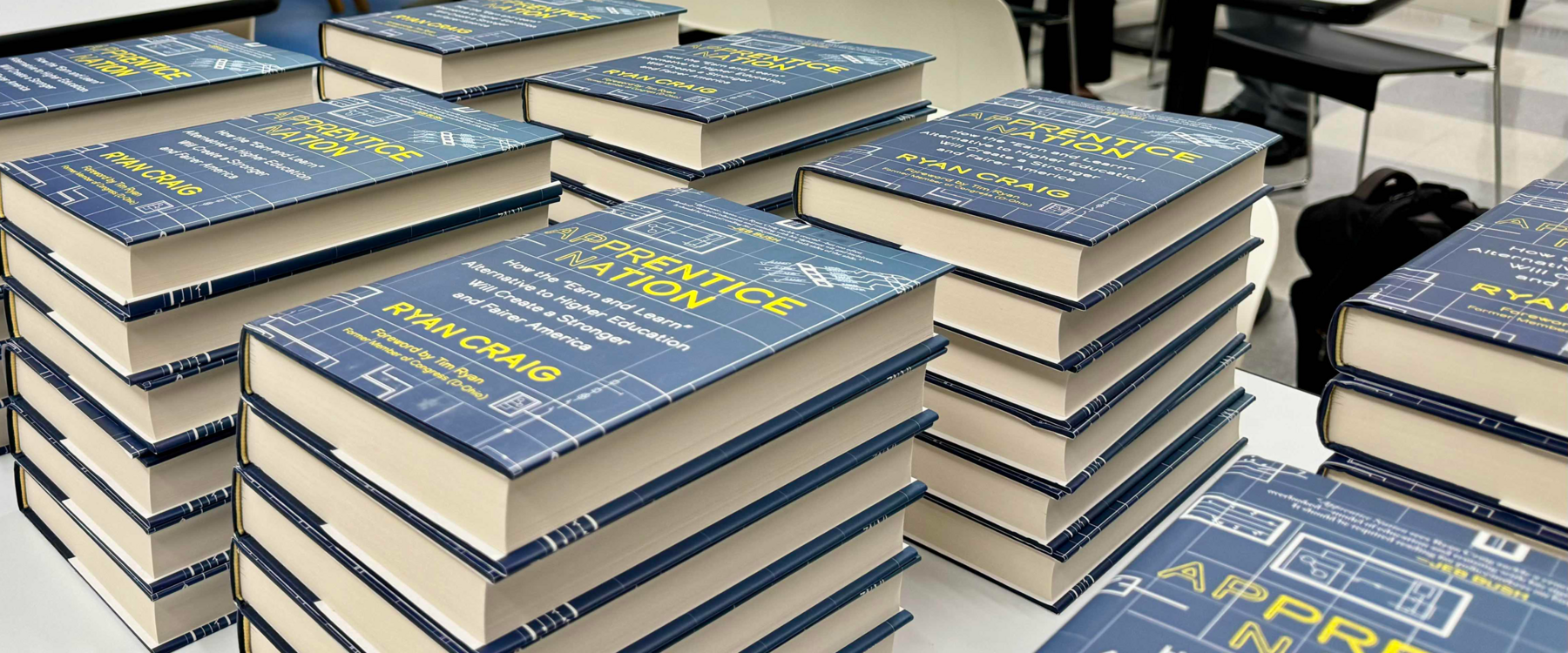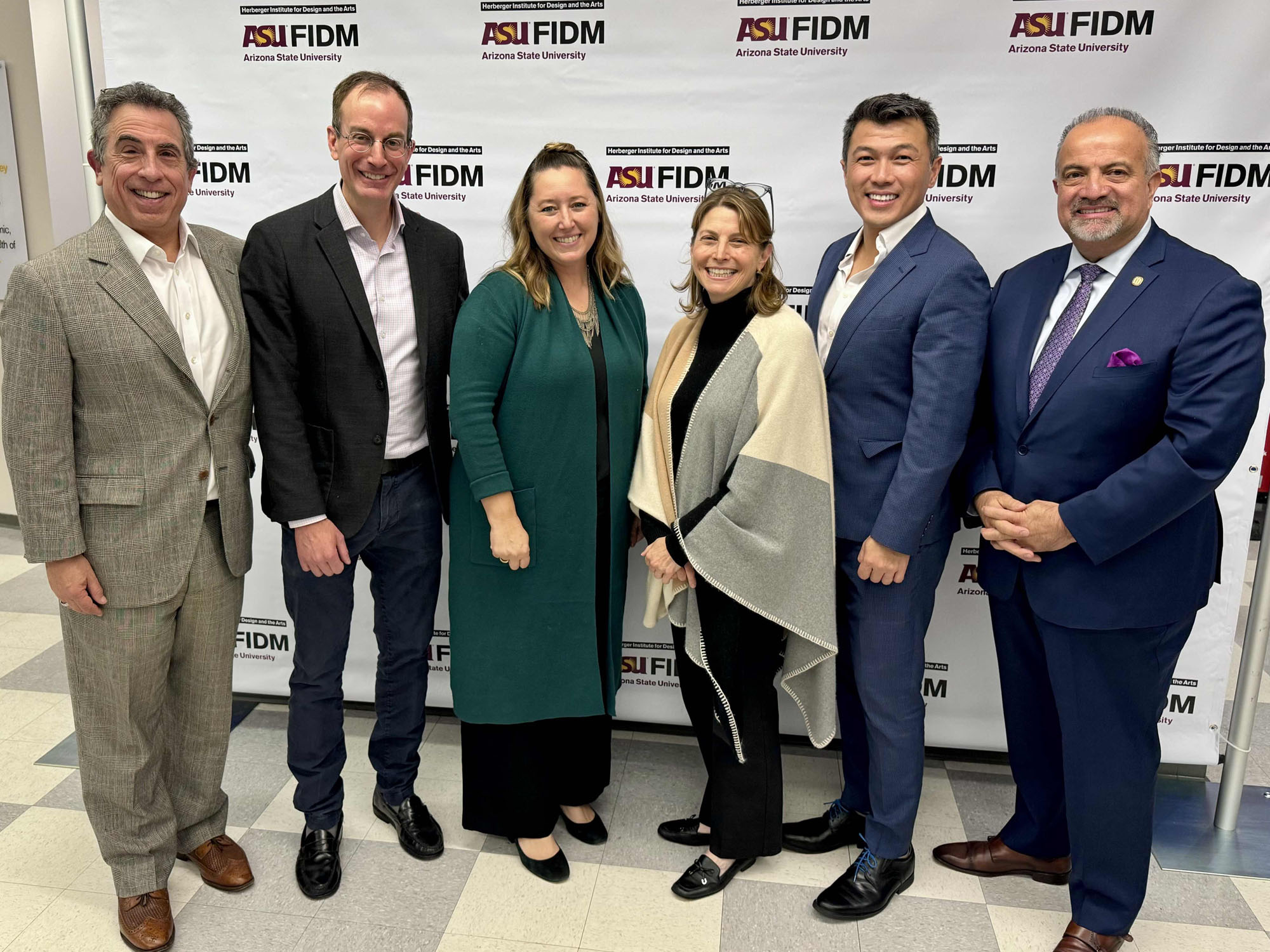
ASU Learning Transformation Studios Hosts Discussion on "Apprenticeships, the Workforce, and the Education Ecosystem"
Education leaders explore ways to increase apprenticeship opportunities and create new learning pathways.
At a time when many are questioning the value of higher education and more families are looking for alternatives to taking on student loan debt, could apprenticeships be a better pathway for career-minded learners? That question brought a roomful of education, business, nonprofit, and government leaders to the ASU California Center Grand on November 28, 2023, for a compelling conversation about "Apprenticeships, the Workforce, and the Education Ecosystem."

The event, hosted by the ASU Learning Transformation Studios and sponsored by The Smidt Foundation, was centered around Ryan Craig's new book, "Apprentice Nation: How the 'Earn and Learn' Alternative to Higher Education Will Create a Stronger and Fairer America."
Craig, who is also the managing director at Achieve Partners, spoke about the need for a modern apprenticeship system that will enable students and job seekers to learn while they earn. He explained how apprenticeships benefit students and ensure workforce diversity and mobility.
After praising ASU for being "much more employment aligned than your average college," Craig said, "your average college is doing as good a job as colleges have ever done at equipping enough people for the good jobs of the 20th century."

Craig added that many colleges are not properly preparing students for 21st-century careers because their programs are not teaching the necessary digital and platform skills and business and role knowledge that people need to compete in today's marketplace.
"Apprenticeships, I posit, is the obvious alternative. It's the alternative to truly leveling the playing field for people of all backgrounds because it's a job, it's a paying job where you are making a living wage from day one," said Craig.
As you become more productive as an apprentice, your pay increases, and there are clear career paths," he said.
The evening began with a catered networking reception and opening remarks by Alan Arkatov, executive director of the ASU Learning Transformation Studios and senior advisor to the ASU President, Dr. Michael Crow.

"We do not see apprenticeships as a threat to higher learning. On the contrary, we see it as an opportunity," explained Arkatov. "Whether a student takes a direct path from high school to an apprenticeship, or an apprenticeship is part of a more formal academic experience, hands-on training is good for the student, good for their industry, and crucial to ensuring we have a diverse workforce skilled in the jobs of the 21st Century."
After making his case for the creation of an "Apprentice Nation,” Craig joined a distinguished panel of education leaders who continued the conversation with a discussion on how institutions of higher education and the business community should work together to increase apprenticeship opportunities and access.
Lindsey Kozberg, Senior Director at The Smidt Foundation, served as the moderator for the panel and kicked off the conversation by asking the panelists what motivated them to come to the ASU California Center on a Tuesday night to talk about apprenticeships in Los Angeles.
Stephen Cheung, President and CEO of the Los Angeles County Economic Development Corporation, explained that at the LACEDC, "our job is to create a more equitable, sustainable, resilient growing economy, and we need to make sure that our workforce is prepared and as we look at the future, we are not there."
Cheung says that while the industries in the region will always need Ph.D.- and masters-level employees, they will need a lot of people with hands-on technical expertise.
"If we are not ready to build the workforce of tomorrow, LA is not going to be competitive," Cheung added.
Kimberly Merritt, Vice President of ASU Learning Enterprise, expressed her concern that too many students don’t get the opportunity to try the profession they are studying in school before joining the workforce. She worries that without hands-on experiences, students won't know if they are passionate about their future careers until they start working.
"It's apprenticeships, but it's also just broadening the idea that higher ed in practice and what you're doing doesn't have to be disconnected. You don't have to learn to do a thing and then go try it. That should be a blended experience, and that's just not in any shape or form what our students are getting right now," explained Merritt.
Francisco Rodriguez, Ph.D., Chancellor of the Los Angeles Community College District, received a round of applause when he said, "We see ourselves as having the principal mission of eradicating poverty."
He added, "Here in this beautiful location that we call home, Los Angeles, we have obscene wealth and abject poverty living right next door to each other. So, one of the ways to eradicate poverty is through a high-quality and affordable education."
Dr. Rodriguez explained that we need to change the mindset that attending a trade school or participating in an apprenticeship means the students aren't as capable, motivated, or intelligent as those at a traditional four-year university or college.
"We have this mindset even within our institution. In the 20th century, we had tiers even within our own universities and colleges; you had universities and then the career and technical education," said Dr. Rodrigues. "We would put these folks in other parts of the campus, in the farthest parts of the campus, with equipment and facilities that were far, far away. While the 21st community college has more of those programs at the center of the campus."
Dr. Rodriguez said that while their primary mission is to matriculate students to four-year programs, many of their students are older, work full-time, and come to the community college system for job and career training.
Kozberg then pointed out the disparity between the funding for four-year college programs and money for apprenticeships and asked what it would take to create a robust apprenticeship system in Los Angeles.
"Right now, high schools aren't looking at themselves as a place to prepare kids for careers and college. It's college and sometimes maybe a career if that college thing doesn't work for you," she said.
Craig said infrastructure is the biggest challenge to implementing a more robust nationwide apprenticeship network.
"This is an infrastructure problem. We have this massive tuition-based infrastructure. We don't have the infrastructure of jobs, good jobs for 18, 19, 20-year-olds in this country," Craig explained.
He added, "We need to invest and establish hundreds of thousands or millions of good jobs for young people that have career pathways and training, building its infrastructure. Once we get that infrastructure, I think high schools will be required to put much more emphasis on careers."